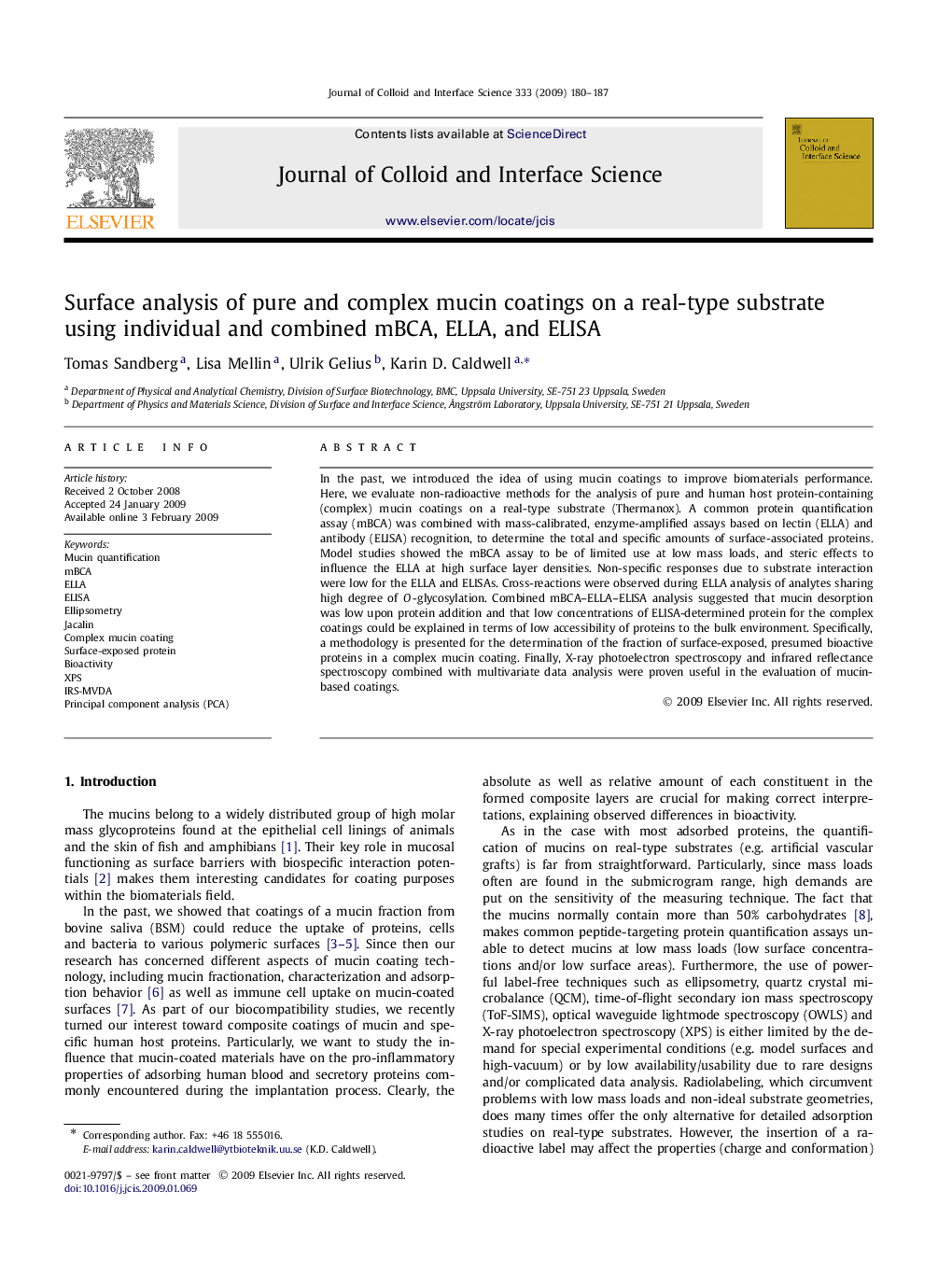| Article ID | Journal | Published Year | Pages | File Type |
|---|---|---|---|---|
| 610963 | Journal of Colloid and Interface Science | 2009 | 8 Pages |
In the past, we introduced the idea of using mucin coatings to improve biomaterials performance. Here, we evaluate non-radioactive methods for the analysis of pure and human host protein-containing (complex) mucin coatings on a real-type substrate (Thermanox). A common protein quantification assay (mBCA) was combined with mass-calibrated, enzyme-amplified assays based on lectin (ELLA) and antibody (ELISA) recognition, to determine the total and specific amounts of surface-associated proteins. Model studies showed the mBCA assay to be of limited use at low mass loads, and steric effects to influence the ELLA at high surface layer densities. Non-specific responses due to substrate interaction were low for the ELLA and ELISAs. Cross-reactions were observed during ELLA analysis of analytes sharing high degree of O-glycosylation. Combined mBCA–ELLA–ELISA analysis suggested that mucin desorption was low upon protein addition and that low concentrations of ELISA-determined protein for the complex coatings could be explained in terms of low accessibility of proteins to the bulk environment. Specifically, a methodology is presented for the determination of the fraction of surface-exposed, presumed bioactive proteins in a complex mucin coating. Finally, X-ray photoelectron spectroscopy and infrared reflectance spectroscopy combined with multivariate data analysis were proven useful in the evaluation of mucin-based coatings.
Graphical abstractAnalysis of total and surface-exposed HSA in composite HSA–mucin coatings.Figure optionsDownload full-size imageDownload as PowerPoint slide
